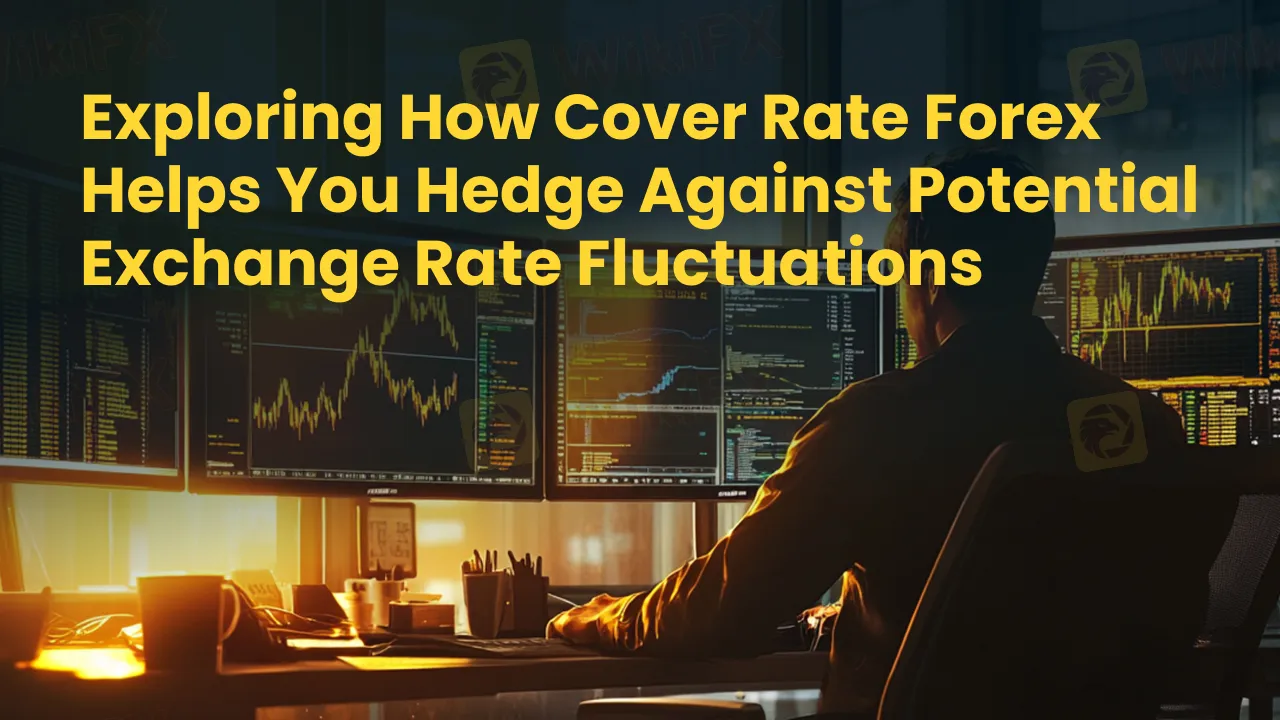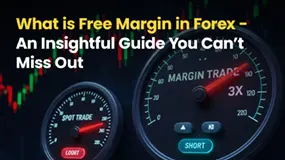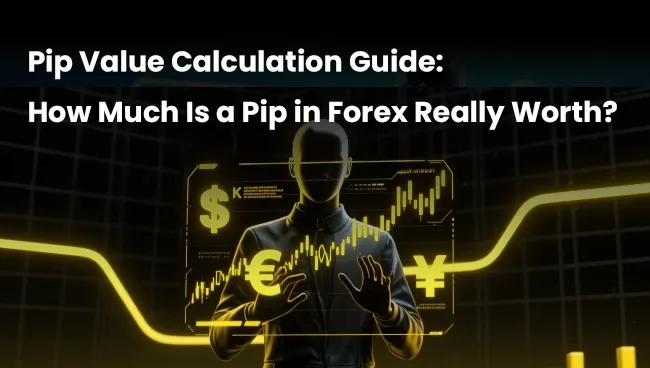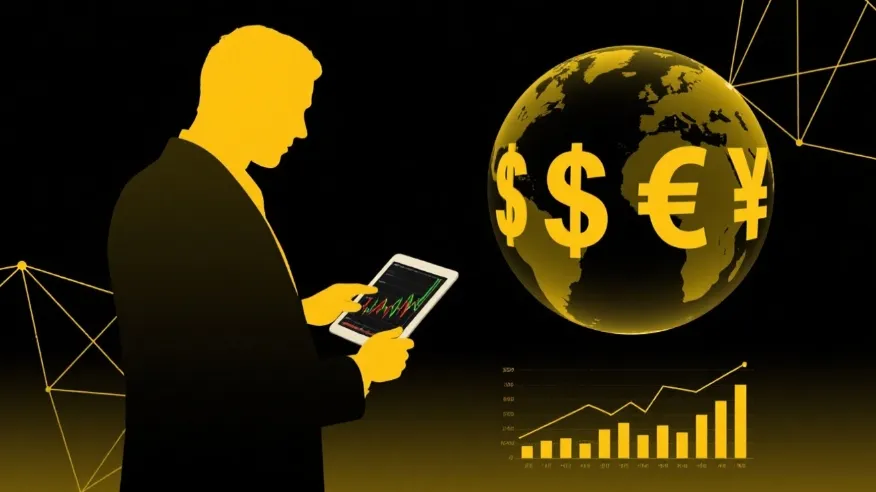Exploring How Cover Rate Forex Helps You Hedge Against Potential Exchange Rate Fluctuations
Abstract:Exchange rates are constantly changing; they fluctuate based on trading volume, market sentiment, and several other factors. These fluctuations can raise concerns for you if they don’t turn out as expected. That’s why many like you are resorting to a cover rate forex strategy to hedge against currency fluctuations. Read on to learn more about it.

Exchange rates are constantly changing; they fluctuate based on trading volume, market sentiment, and several other factors. These fluctuations can raise concerns for you if they don‘t turn out as expected. That’s why many like you are resorting to a cover rate forex strategy.
Often associated with covered interest rate arbitrage, this strategy allows investors to borrow in a low-interest currency and convert it into a currency bearing high interest rates. Then follows the investment in that currency and a forward contract to get the original currency at a predetermined rate. This helps eliminate the exchange rate risk. Considering that it may sound complex, we prepared an useful guide on the cover rate forex phenomenon. Read on to understand the process.
Covered Interest Rate Parity and How It Protects You Against Forex Volatility
Covered Interest Rate Parity (CIRP) or cover rate forex is a popular forex concept where the difference in interest rates of two countries currencies should reflect in the forward exchange rate. It thus means that the whole process of borrowing a low-interest currency, converting it to a currency with higher interest rates, investing, and then using a forward contract to convert to the original currency should work in a way to eliminate the potential profit from fluctuations in exchange rates. The forward contract used in it helps cover or hedge the exchange rate risk.
Interest Rate Parity Condition Formula
The forward exchange rate is calculated using the formula below.
F = S x (1+id)/(1+if)
Where,
‘F’ stands for forward exchange rate.
‘S’ remains the existing spot exchange rate.
‘id’ is the domestic or base currencys interest rate.
‘if’ remains the quoted or foreign currencys interest rate.
Demonstrating Covered Interest Rate Parity with an Example
Example - You are contemplating a cover rate forex concept, keeping USD and GBP as two currencies. Assume that both of these US and UK-based currencies are trading at par. However, if the annual interest rate of the US is 8% and 4% in the UK, it would be better to borrow in GBP (the UK-based currency), convert it to USD in the spot market, and invest the amount in the US. However, to repay the loan in GBP, entering into a forward contract makes sense. With that, you can exchange USD for the former. Covered interest rate parity thus comes into the equation and helps eliminate the gains from the transaction.
As USD and GBP are trading at par, a unit of one currency is equivalent to another.
Forward price would thus be
1 x [(1+4%)/(1+8%)] = 0.96
How Different is Covered Interest Rate Parity from Uncovered Interest Rate Parity?
Yes, both these terms exist and have their own implications for forex investors. While covered interest parity covers the exchange rate using forward contracts, uncovered interest rate parity deals with rate forecasting and covering exposure associated with foreign exchange risks. The uncovered interest rate parity thus does not have forward rate contracts. Instead, it uses just the expected spot rate. If the forward and expected spot rates become equal, covered and uncovered interest rate parity will remain the same.
Conclusion
Understanding cover rate forex helps you make decisions that efficiently manage your risks. Its a powerful tool to protect your forex exposure against market volatility.
So next time you hear about forex fluctuations, use the cover rate forex strategy to cover your risks smartly.
Something New, Something Exciting, Something Rewarding for you!
Join the WikiFX Masterminds community to know whats in store for you!

Read more

What is Free Margin in Forex - An Insightful Guide You Can’t Miss Out
Forex trading runs on the margin you have. In an action-packed forex market, where traders continually trade based on news developments or technical indicators, what keeps them going is the availability of free margin. So, what is free margin in forex? It’s an equity that traders can use to open new trades. It is also the amount your current holdings can move against you before facing a margin call. The market value variations can affect the margin balance when trading foreign currencies. In this article, we will discuss it.

Pip Value Calculation Guide: How Much Is a Pip in Forex Really Worth?
The journey from asking "how much is a pip in forex" to confidently executing risk-managed trades is significant. It marks the transition from casual speculator to serious, methodical trader. Pip value isn't trivia. It's the fundamental variable linking your strategy, account, and the market itself. Without this knowledge, you're trading blind. You can't accurately quantify risk or potential reward. But with it, you would gain control over the most important factor in long-term success: your financial exposure.

Demystifying the World's Largest Market: What is the Forex Market?
We started with a simple question: what is the forex market? We've traveled from basic definition to understanding its enormous scale, diverse participants, and unique language of pairs and pips. Also, we've seen how real economic events create actual movements and compared its unique features to stock markets. The forex market is more than a trading venue. It's the global pulse, showing the world's economic health, political changes, and money flows in real time. For those who approach it with hard work, respect for risk, and endless commitment to learning, it offers a unique window into global economic mechanics and an unmatched intellectual challenge.

This Week’s List of "Scam Brokers Is Out!" Checkout Now
PAY ATTENTION INVESTORS AND TRADERS! WEEKLY SCAM ALERT LIST IS HERE! Check out this list carefully. There are 8 scam brokers you need to watch out for! These brokers are known for fraudulent practices and can steal your hard-earned money if you're not careful.
WikiFX Broker
Latest News
Spains economy keeps growing — why is the country doing so well?
OctaFX Update: Crypto Deposit Restrictions Raise Regulatory Concerns
Pip Value Calculation Guide: How Much Is a Pip in Forex Really Worth?
UAE Retail Investors Show Strong Preference for Local Stocks Amid Global Tensions
What is Free Margin in Forex - An Insightful Guide You Can’t Miss Out
OctaFX Update: Crypto Deposit Restrictions Raise Regulatory Concerns
Online Fraud Risks Rising as AI Transforms the Security Landscape
Propel Capital Shuts Down: Another Prop Firm Exits the Market
Demystifying the World's Largest Market: What is the Forex Market?
What Is a Pip in Forex? The Ultimate Guide to Calculating Profit & Loss
Rate Calc

